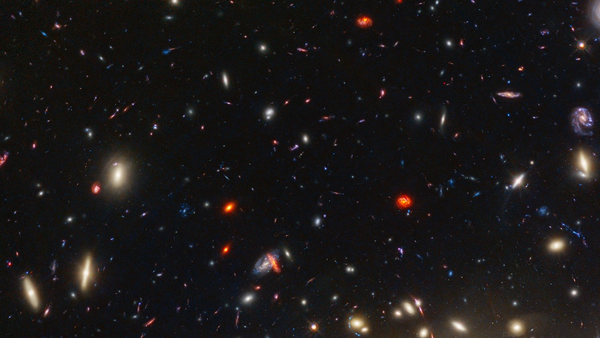
The World of Webb, the Cosmic Circle of Life, and seeing through the Eyes of Einstein
- Event Type
- Seminar/Symposium
- Sponsor
- Department of Astronomy
- Location
- 134 Astronomy Building
- Virtual
- Join online
- Date
- Nov 11, 2025 3:45 - 4:45 pm
- Speaker
- Professor Rogier Windhorst
- Contact
- Daniel Franco
- danielf9@illinois.edu
- Phone
- 217-300-6769
- Views
- 73
- Originating Calendar
- Astronomy Colloquium Speaker Calendar
The 6.5 meter NASA James Webb Space Telescope (JWST) is the near--mid-IR sequel to Hubble, and was successfully launched from French Guiana on December 25, 2021
This talk summarizes the main and most dramatic discoveries by JWST: how much cosmic star-formation has produced its own dust, and has been hidden in its own dust. Webb has revealed the ``Cosmic Circle of Life'', where stars and their planetary systems are formed in this environment of cosmic dust, while stars return their own dust at the end of their lifetimes. In cosmic perspective, the formation of the Sun and Earth occurred 4.5 billion years ago
when other galaxies were already twice as old!
In random deep fields and Webb's stunning deep lensing galaxy cluster fields, the earliest galaxies have been detected up to redshifts z=14 and beyond, when the universe was barely 300 Myr old. Supermassive black hole growth may have started even before that time --- often shrouded by dust perhaps produced by Population III stars --- and triggered surrounding galaxy formation through powerful outflows that include relativistic jets. (Supermassive) black hole growth has very nicely kept up with the process of galaxy assembly, with possible consequences for the nature of Dark Energy.
Very high redshift galaxies --- lensed through massive galaxy clusters up to half the Hubble time in distance --- are being imaged by Webb at light year scales --- physical scales not resolvable without lensing. Perhaps even more
stunning, individual stars are now being discovered in significant numbers at very high magnification (mu~1000--10,000) up to redshifts z~6 when going across the cluster caustics, constraining the the stellar mass function directly, and perhaps also the nature of (Wave) Dark Matter. Finally, Webb has detected some lensed high redshift multiply-imaged Supernovae (SNe), whose relativistic time delay helped address the Hubble tension.
